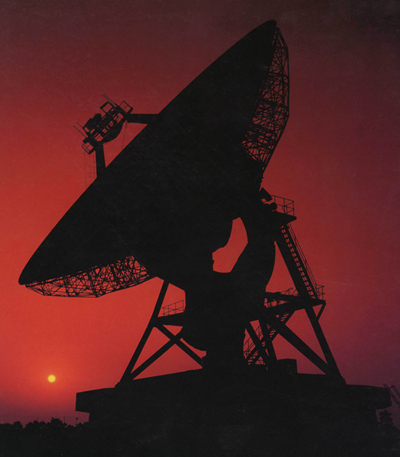The Sheshan 25m radio telescope is an alt-az antenna run by SHAO. The telescope is located in the Sheshan area, about 40km west of Shanghai.
 The radio telescope has been in operation since 1987, and it is one of the five main facilities of the Chinese National Astronomical Observatory. The station is a member of the European VLBI Network (EVN), the International VLBI Service for Geodesy and Astrometry (IVS), and the Asia Pacific Telescope The radio telescope has been in operation since 1987, and it is one of the five main facilities of the Chinese National Astronomical Observatory. The station is a member of the European VLBI Network (EVN), the International VLBI Service for Geodesy and Astrometry (IVS), and the Asia Pacific Telescope
The telescope is located at longitude 121°11' 59" E and latitude 31°05' 57" N, 5m above sea level. Some parameters of the antenna are listed below:
Diameter: 25m
Antenna type: Kashegelun Beam wave-guide
Seat-rack type: Azimuth-pitching ring
Main surface precision: 0.65 mm (rms)
Point precision: 20" (rms)
Rolling range: Azimuth : -860 ~to~ 4250; Elevation: 50 ~to~ 880
Maximum rolling speed: Azimuth : 0.550/sec; Elevation: 0.280/sec
Receivers: Five bands of VLBI observation are available at Sheshan. These are: L band (18 cm), C band (6 cm), K band (1.3 cm), and S/X band (13/3.6 cm). The parameters of the receivers are listed in Table 1. The observation band, frequency range, and the efficiency of each band are given in the first three columns respectively. The type, polarization model, and system temperature are given in the final three columns. The L, C, and K bands are used for astrophysics, and the S/X double frequencies used for geodesy. The X band is also sometimes used for astrophysical observations.
The X-band receiver system was upgraded to a wide-band system in December 2000. Thus the Sheshan station has been able to participate in the wide-band geodynamics experiments of IVS since 2001.
A new twin-polarization receiver for the C band is currently under construction with the cooperation of ASTRON (the Netherlands), and will be available in mid 2004.
The upgrade of the frequency switching system of Sheshan station was finished by the end of 2002. The switch of frequency between any two of the C, K, and S/X bands can now be carried out in only three minutes. The system is thus very useful for multi-frequency observations.
The VLBI recording System:There are three recording systems at the Sheshan VLBI station (VLBA, MKIV, and S2). Both thick and thin tapes are available for the VLBA and MKIV recording systems.
The MKIV upgrade was completed successfully in 2000, and the Sheshan station has participated in the two-head recording test at 512Mbit/s carried out by the EVN organization in October 2001. Fringes were measured successfully on both head-stacks. The performance of the observing system is presently undergoing further improvement, and the MKV system will be available from mid 2004.
The Sheshan station is also equipped with a Canadian S2 VLBI recording system, used for APT, VSOP, and other VLBI observations. In addition, hydrogen masers were recently made by SHAO.
Leading Professor: Xiaoyu Hong
Group Members:
Faculty: Tao An(associate professor), Qingyuan Fan(professor), Wei Gou, Xiaoyu Hong(professor), Bin Li(engineer),Rongbin Zhao(assistant engineer), Quanbao Ling(engineer), Jinqing Wang(engineer), Lingling Wang(engineer), Weihua Wang(associate professor), Bo Xia(assistant engineer), Zhuhe Xue(professor), Hong Yu(associate professor), Linfeng Yu
|